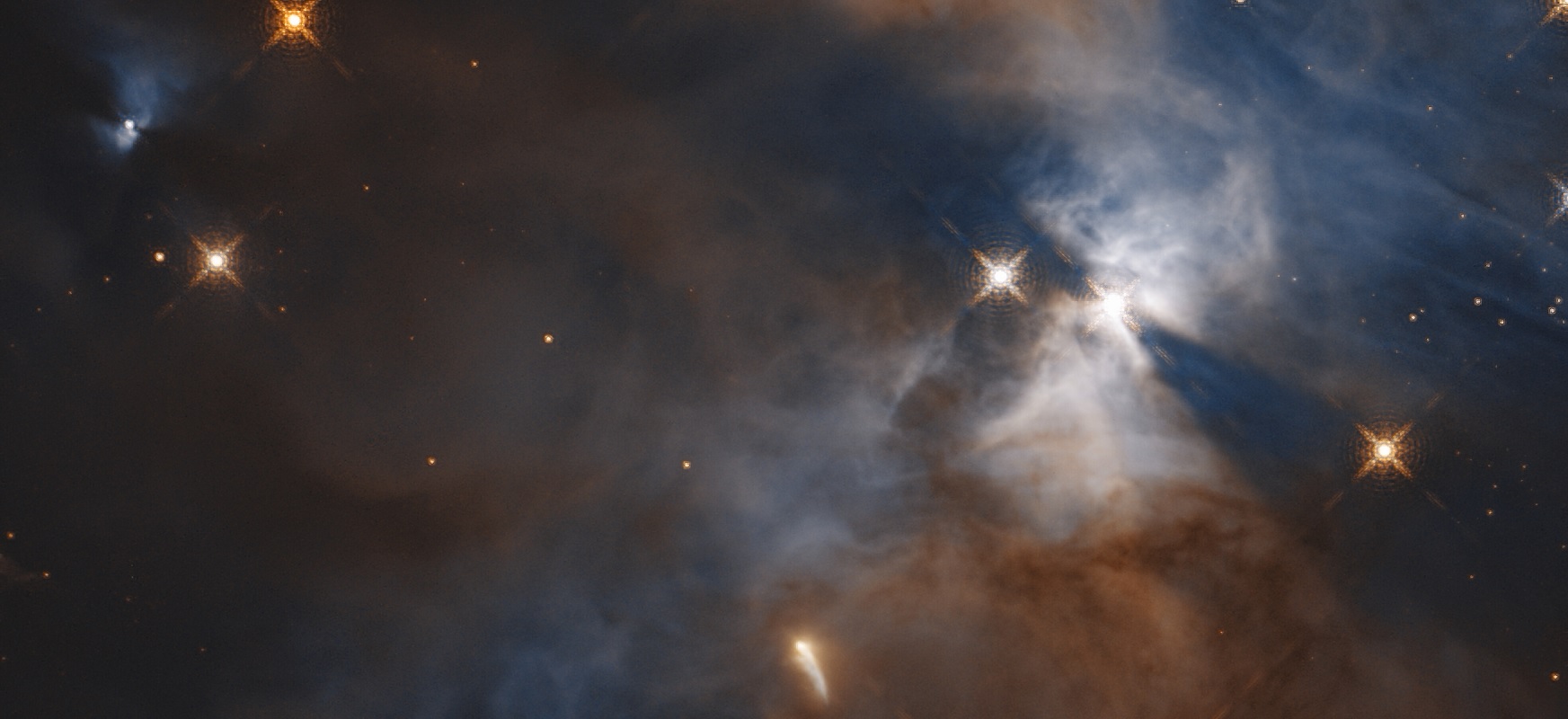Hubble observed the flutter of the bat s sharp shadow

Because of her shadow, the young star HBC 672 is often called the shadow of a bat. The Hubble Space Telescope has now observed the peculiar "fluttering" of wings in the shadow of the disk surrounding it. The star is in the star nursery in the Snake Constellation some 1300 light-years away from Earth.
The Hubble Space Telescope in 2018 made observations of an invisible protoplanetary disk surrounding a young star. It is this disk that casts a huge shadow on the gas-dust cloud that lies further away. The shadow itself looks like a bat with outstretched wings.
Now astronomers have observed ... the "fluttering" of this bat's wings. What led to this? Perhaps this is due to the gravitational interaction of the planet, which could disrupt and distort the disk.
We have a star surrounded by a disk, and this disk does not resemble Saturn's rings - it is not flat, but distended. This means that the radiation from the star, if emitted upwards, flies upwards and is not blocked by anything. However, if it is emitted along the disk plane, it is absorbed in it and does not escape to the outside - in this way the disk casts a shadow on the environment - explains Klaus Pontoppidan, the main author of the study and the astronomer at the Space Telescope Institute (STScI) in Baltimore.
The discovery of the "shadow flutter" of the disk was a big surprise for astronomers. Researchers observed the shadow in several filters over 13 months. When they combined old and new data, it turned out that the disk changed position.
By the way, the shadow of the disk is simply huge - its diameter is about 200 times larger than the diameter of the Solar System (about 10 billion km), and since the light also has a finite speed, it takes 45 days to get from the star to the outer edge of the shadow.
Pontoppidan and his team calculated that a disk-disturbing planet orbits its star in at least 180 days. Estimates indicate that its distance from the star is similar to the distance between the Earth and the Sun (about 150 million km). Changes in the position of the disk surrounding the star indicate that the plane of the planet's orbit is inclined at a certain angle to the plane surrounding the star of the disk, and it is this slope that causes the disk to deform.
The disk itself consists of gas, dust and rocks and is far too small and too distant to be seen by even Hubble. Based on the observations of the shadow he cast, researchers assume that the ratio of its height to the radius is 1: 5.
Hubble observed the flutter of the bat's sharp shadow
Comments
Post a Comment